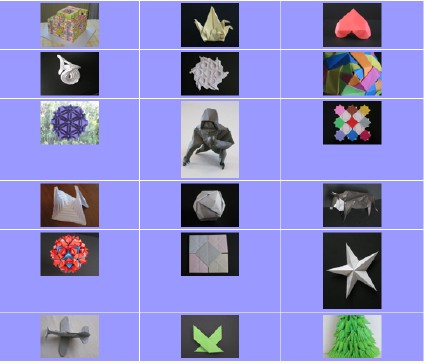The most used, the square, but any format can be used according to his needs.
From the very first books of origami, regular or irregular shapes were used:
- rectangles, in various proportions: 1: 2, 1: 3, 1: √2, 1: √3 etc. Methods of cutting rectangles in large quantities exist, especially for the use of modular origami.
- regular polygons, such as the equilateral triangle, the square, the pentagon, the hexagon (realm of rosettes and tessellations) or the octagon. Again, processes without rules or compasses have been developed.
- complex shapes, like those used by Gido Rokoan for some of his crane assemblies or by cripts / ficheaut.php & numaut = 605% Elias Neal% /, awesome English bender.
- discs, like coasters.
Jacques Justin and James Minoru Sakoda have studied what they call the « free forms », irregular quadrilaterals but with specific properties that allow them to be used as a square. The different parts of the preliminary base change in proportions, which makes it possible to obtain foldings out of the ordinary. Some photos of the crane treatment with this process:
- kite shape: the axial symmetry is preserved, but the proportions of the shutters are not the same,
- trapezoidal shape: two forms of shutters,
- free form: the four shutters have different dimensions.
In summary, use the format you like, do not be prisoners of the square! A video (that some or some people will deem sacrilege ...) worth watching: ttps://www.youtube.com/watch?v=A_WCJ1bX6lI % 21 Pretty Flowers Ideas % / by 5-Minute Crafts Family
|


